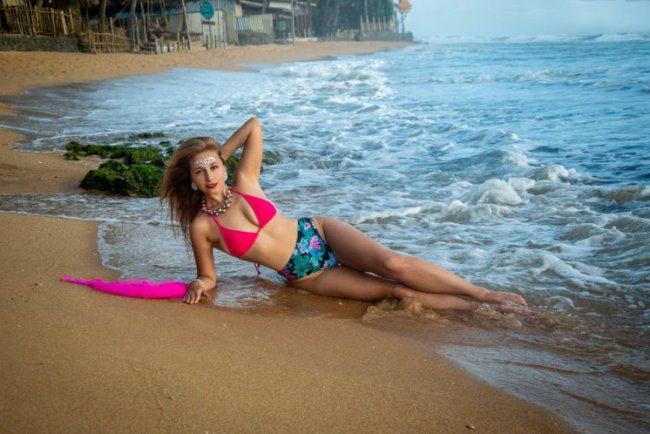A Founder's Guide to Choosing the Perfect Swimwear Fabric
Starting a swimwear brand? Choosing the right fabric is crucial. Our guide covers nylon, polyester, blends, and sustainable options like ECONYL® to help you select the perfect material for performance, durability, and a premium feel.
You have the vision, the designs, and the ambition to launch the very swimwear brand. It’s an exciting, creative endeavor. But before you can get to the glamorous photoshoots and five-star reviews, you need to make one of the most foundational decisions for your business: choosing the right fabric.
The material you select is the very foundation of your product. It dictates the fit, feel, durability, and ultimately, the quality and reputation of your brand. Getting it right is non-negotiable. So, where do you start? Let's break down the essential elements to consider when selecting the perfect swimwear material.
The Non-Negotiables: Key Fabric Properties
Before diving into specific fabric types, understand the performance characteristics that all great swimwear must have. Look for these features on any fabric spec sheet.
• Four-Way Stretch & Recovery: This is the most crucial property. Swimwear needs to stretch in all directions (both lengthwise and crosswise) to hug the body for a perfect fit, and then "recover" or snap back to its original shape without sagging. This is achieved by blending a base fiber with an elastane fiber like Lycra® or Spandex.
• Chlorine & Saltwater Resistance: Your swimwear will be exposed to harsh elements. A quality fabric must resist degradation from chlorine and salt to prevent it from becoming brittle or losing its shape after just a few wears.
• UV Protection (UPF 50+): Sun safety is a major selling point. A fabric with a high Ultraviolet Protection Factor (UPF) rating shields the skin from harmful UV rays. Aim for UPF 50+, which blocks over 98% of UV radiation.
• Colorfastness: Your vibrant prints and bold solids need to stay that way. Choose fabrics that are engineered to resist fading from sun, chlorine, and repeated washing.
• Quick-Drying & Breathable: No one enjoys sitting in a soggy swimsuit. Materials that wick moisture away from the skin and dry quickly are essential for comfort.
The Main Contenders: Nylon vs. Polyester
The swimwear world is dominated by two primary synthetic blends. While both are mixed with elastane for stretch, they have distinct characteristics.
Nylon Blends (Nylon/Spandex)
Often considered the traditional choice, nylon is renowned for its incredibly soft, "buttery" hand-feel and beautiful luster.
• Pros: Exceptionally soft and comfortable against the skin, lightweight, durable, and has excellent stretch and recovery.
• Cons: Can be slightly less resistant to chlorine and sunlight than polyester, and is often more expensive.
• Best For: Brands targeting a luxury market where a premium, gentle feel is a top priority.
Polyester Blends (Polyester/Spandex)
Once seen as a less-desirable alternative, modern polyester has made huge advancements. It's now a technical powerhouse perfect for high-performance swimwear.
• Pros: Outstanding durability. It’s highly resistant to chlorine, sun, and pilling. It also holds vibrant colors and prints exceptionally well.
• Cons: Traditionally has a slightly less soft feel than nylon, though new micro-polyesters are closing this gap.
• Best For: Athletic swimwear, children's lines, or any collection featuring bright, intricate prints those need to last.
The Sustainable Wave: Eco-Friendly Fabrics
Today’s conscious consumer often seeks out brands that align with their values. Offering sustainable swimwear isn't just a trend; it's a powerful brand differentiator.
• Recycled Nylon (e.g., ECONYL®): This innovative material is made from regenerated nylon waste, such as old fishing nets, fabric scraps, and industrial plastic. It performs identically to virgin nylon but helps clean up our oceans and reduces the demand for new resources.
• Recycled Polyester (rPET): This fabric is created by melting down and re-spinning existing plastic, like PET water bottles. It offers the same durability and colorfastness as virgin polyester while diverting plastic from landfills.
Don't Forget the Details
• Fabric Weight (GSM): Measured in Grams per Square Meter, GSM tells you the fabric's density. A higher GSM (e.g., 190-220 GSM) feels more substantial, offers better coverage, and provides a sense of quality. Lighter weights (e.g., 170 GSM) can be used for linings.
• Lining: Never skimp on lining! It provides comfort, opacity (especially when wet), and helps the swimsuit maintain its structure. Use a quality, lightweight swim lining that complements your main fabric.
The perfect fabric for your brand is a strategic choice that balances feel, performance, and price. Our advice? Always order samples. Feel the fabric, stretch it, and even get it wet. Your selection is the handshake between your design and your customer. By choosing a high-quality material that performs beautifully, you're not just selling a swimsuit—you're building a brand people will trust and love for seasons to come.
What's Your Reaction?



































